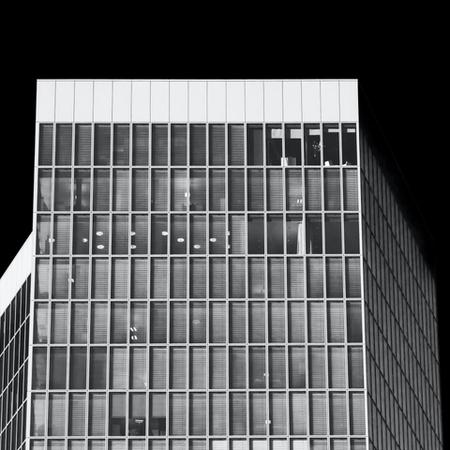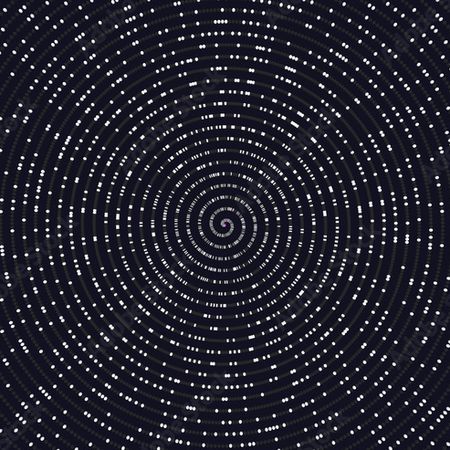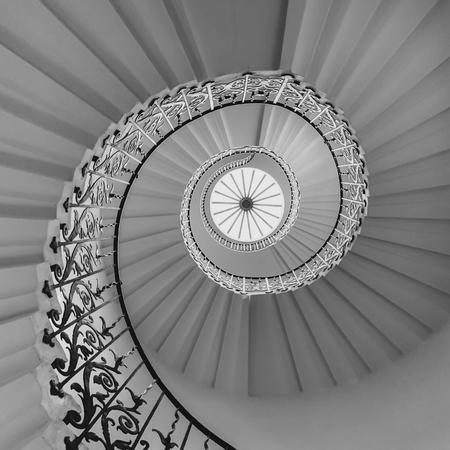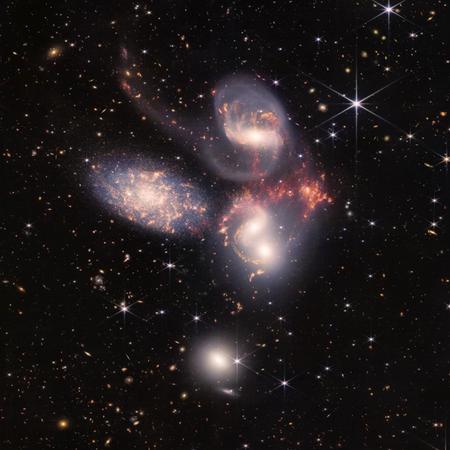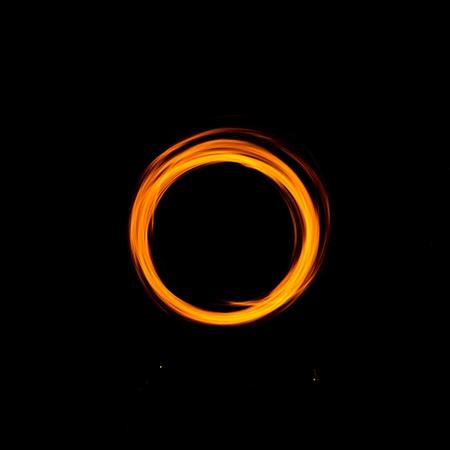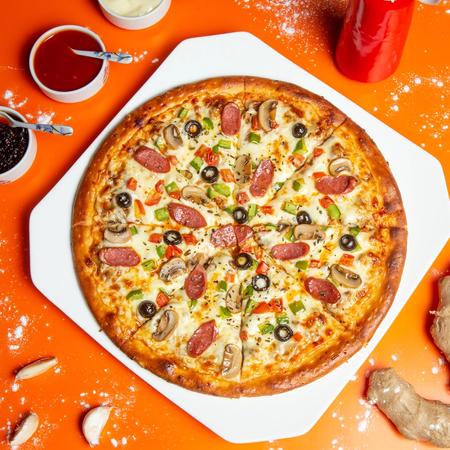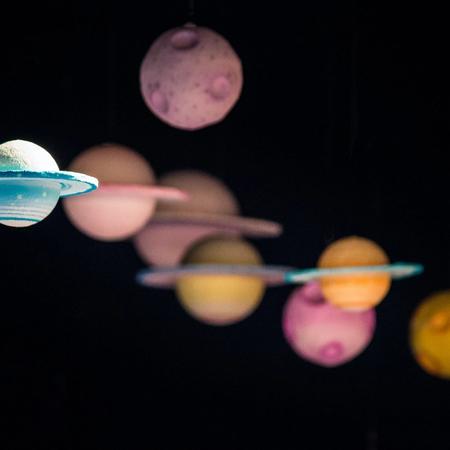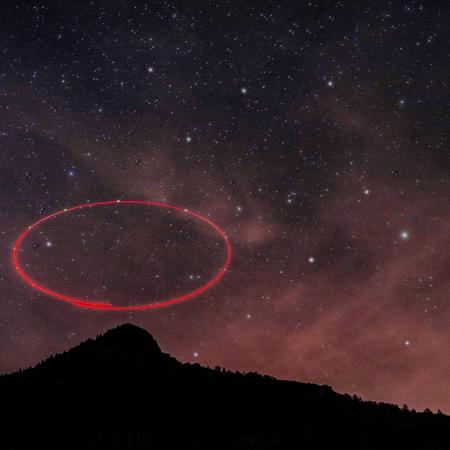Prime Proof
Proving is irrational is a classic story in the math world. From one perspective, it is so simple. But, from another perspective, it is deeply profound. With that thought, let’s continue our journey into the world of prime numbers.
Prime numbers are foundational to math. Yet they also are a mystery. Since we love mysteries, math people have not been shy about leaning into the challenge of understanding the mysteries of primes.
The first question about prime numbers we may ask is: How many are there? That question has been answered long ago in that there are an infinite number of primes. Hmmm. That may not be a shocker, but how do we know this? How do you prove there is an infinite number of anything? We proved there are an infinite number of integers, but proving there are an infinite number of prime numbers appears to be a different game. That is because we always know how to generate the next positive integer: simply add 1 to the previous positive integer. Recall that was the key fact that allowed us to prove there are an infinite number of positive integers. But we do not know how to generate the next prime number from a given prime number, so that technique won’t work.
But let’s use the same trick we used for the positive integers and assume the opposite—that there is a finite number of prime numbers, and perhaps it will lead to another train wreck. To simplify, let’s pretend that the list of primes is only 2, 3, and 5. We can generalize this later, but it will be easier to see the logic with this simple example.
Next, multiply all the primes together to get . Now, add 1 to the total, which is 31. This new number is certainly larger than any of the primes in our set since we multiplied them all together. We have two possibilities for this number 31. It is either prime or not. Let’s consider both cases.
If 31 is prime, then we found a larger prime since we know 31 is larger than the prime numbers we used to calculate this number, so it would be a larger prime number. Our case is closed as we found a contradiction that there were a finite number of primes.
The more interesting possibility is if 31 is not prime. If 31 is not prime, then it is composite and that means we can calculate 31 by multiplying primes together. We also know from the FTA that there is a unique set of primes we multiply to produce 31. In our simple example, that means that at least one of 2, 3, or 5 is one of those primes that we multiply to get 31. But we know 30 is the product of all the primes.
Therefore, both 31 and 30 share a same divisor because we know the prime numbers used to produce 30 was all the primes and there is at least 1 prime number to produce 31. However, 31 and 30 cannot share a divisor since they are only 1 apart. Since we only have 3 prime numbers in our simple example, we can consider all 3.
If the divisor is 2, then the next number after 30 that divides 2 is 32. In other words, 2 cannot be a divisor for both 30 and 31 since they are only 1 apart. Once you grasp that concept, it is clear that none of the other prime numbers could be a divisor for both 30 and 31. If the divisor is 3, then the next number that divides 3 is 33, and if the divisor is 5, then the next number that divides 5 is 35. None of the primes would divide both 30 and 31.
The official proof is similar to this except we generalize it to say that if there are a finite number of primes, we can list them in some collection as for some finite number . This is a large set, but it is finite so we can multiply all these prime numbers together to create the new number . You can think of as the number 30 in our example. would be an extremely large number in the generic example of primes, but it would exist because we know there are an infinite number of integers. Then, simply add 1 to this monster number .
What can we say about ? Again, either is prime or it is not prime. If is prime, we created a new prime not in the original set, which means that our original assumption that there are only primes is false and the case is closed.
However, if is not prime, it must share a prime with since includes all the primes. But there is not an integer greater than 1 that can divide both and . Thus, we hit a train wreck, which means our original assumption that there are a finite number of primes is not true.
We can see this proof in action by returning to our previous example, trying another number, and assuming that there are only 4 primes: 2, 3, 5, and 7. Multiply those 4 numbers together to get 210. Then, add 1 to 210 to get 211. We are confident that 211 cannot be divided by any of these primes. Another example to consider is to assume the only primes are 2, 3, 5, 7, 11, and 13. Multiply these numbers and add 1 to get 30,031. This number actually is not prime because we can write , and both 59 and 509 are prime. But these numbers are not part of the original finite set we assumed, so we still identified prime numbers not in the original set.
Once I understood this proof, I was amazed. I struggled to find words to describe it. It is relatively simple, yet it is foolproof. And it is true even though there are an infinite number of possible cases to consider. It would only require 1 exception to make this false, but there is not an exception. This relatively simple set of logic proves that there is an infinite number of prime numbers. This is fascinating because we have no logic to determine the next prime. But, regardless of how large a prime we find, we are confident there is a larger prime. I hope the logic for this proof makes sense to you.
Finding primes
As of January 2020, the largest known prime is . It’s expressed as a power of 2 because primes that are one less than a power of 2 are common. If you want to write the digits, bring some paper because it has 24,862,048 digits when written in base 10. Finding primes this large takes a lot of work, even for a computer. Yet, with a fairly short story, we were able to prove beyond a shadow of a doubt that there is an infinite number of prime numbers. That means that the largest prime number we know, and we know a large prime, is only the beginning of more primes. Stating that there are an infinite number of primes is not intuitive, or at least not intuitive to me.
Isn’t it clever how we proved there is an infinite number of primes? We first assumed there is a finite number of primes. Then, as we examined this finite set, we identified we could always create one more that is not included in this finite set. It didn’t matter what finite set we had. Thus, the set of primes cannot be finite.
This clever proof doesn’t require a math degree to understand. This proof was given by Euclid, so we’ve known this fact a long time. This is just another reminder to me how smart these math people of antiquity were. Euclid is just one of many great Greek mathematicians. It is good to know that there have been smart people on this planet for a long time!
You may wonder how quickly we are finding new prime numbers. This latest prime number was found in 2018, so it is current research. Here is a graph of the number of digits in the largest known primes found since 1950. The hunt for primes has grown since we’ve had computers. Most of the math we discuss in this book do not require computers. Finding the next prime is an exception.

Notice the scale of the vertical axis increases by powers of 10. Also notice the graph is close to a line (notice the dotted line). If we draw a graph that is an approximate line on a scale that increases by factors of 10, then we are showing an exponential growth. One reason we use scales that are powers of 10 is to determine whether growth is exponential. This indicates that our hunt for the largest prime is not only alive and well but growing at an exponential rate.
Not only is the search for prime numbers alive and well, but the importance of prime numbers is also increasing. Later in Lazarus math, I will share an interesting story of Bernhard Riemann that highlights the importance of prime numbers. Riemann surprisingly revealed a deep mystery connected to prime numbers that is considered one of the great ideas of math that is still developing. But more on that later.
How fast prime numbers are growing
We’ve proven that there are an infinite number of positive integers and primes, so both grow without bound. It is rather interesting that we have an infinite set (the primes) that is a subset of another infinite set (positive integers).
Here's one question you may not have thought of. Is there a relationship between their rates of growth? In other words, if we consider the set of positive integers from 1 to 100, how many prime numbers are in this set? How about if we expand the set of positive integers 10 times, how many primes are there between 1 and 1000? How many primes are in the set of positive integers from 1 to 1,000,000?
Is there a pattern to the number of primes contained in a finite set of integers? Let’s do some research and see where it leads. There are 25 prime numbers from 1 to 100. From 1 to 1000, there are 168 primes, and from 1 to 10,000, there are 1,229 primes. Let’s try two more. From 1 to 100,000, there are 9,592 prime numbers, and from 1 to 1,000,000, there are 78,498. Let’s organize the results in Table 4 below. In order to measure the rate of growth of prime numbers, take the ratio of the number of primes to the number of integers in the set.
Table 4. Ratio of primes
| Primes | Integers | Primes/Integers |
| 25 | 100 | 25% |
| 168 | 1,000 | 16.8% |
| 1,229 | 10,000 | 12.3% |
| 9,592 | 100,000 | 9.6% |
| 78,498 | 1,000,000 | 7.8% |
Notice we are measuring the “density” of prime numbers within the set of positive integers. Thus, we can say that if we randomly chose a number between 1 and 100, we would have a 25% chance of choosing a prime. However, if we randomly chose a number between 1 and 1,000,000, our odds for choosing a prime decrease to 7.8%. You may have an intuition as to why. As we increase our integers, we have more “building blocks” of primes, so we are not as likely to “need” a new prime, or building block, as we scale up our integers.
Math people have been trying to understand prime numbers for a long time and are always searching for a pattern. Another way to phrase this question is: As we climb through the positive integers, what is the probability the next number will be a prime number? At first, that may appear to be a “nerdy” question, but it is intriguing whether there is a pattern, a relationship that we can define, or if it is purely random. It certainly seems like a difficult question.
For starters, notice the percentage of primes decreases as we increase our integer set. Is there some sort of pattern to this decrease? Or is it just a random decrease? The decrease appears random, which is consistent with my intuition. Why would there be a pattern to this collection of primes? If we inventory the first few primes (2, 3, 5, 7, 11, 13, 17, … ), there certainly doesn’t appear to be a pattern. Thus, it only makes sense that as we increase our integers, there is no pattern.
However, the mystery of the primes is like the plot for a common mystery movie. You know the plot: It appears the victim died of natural causes, but it is only the great detective that digs deeper into the mystery and realizes that we can’t judge only on appearances.
Math patterns
When we think of a pattern for the primes, what kind of pattern could there be? One pattern that would be cool would be to predict the next prime, kind of like the Fibonacci sequence. We know what the next number is. It is the sum of the last 2 numbers.
We can’t do that with prime numbers. However, we can think of other patterns we know. For example, if we consider a coin toss, we can’t predict if it will be a head or a tail. But what can we predict? We can predict that if we flip a large number of coins, about 50% will be heads and 50% will be tails. So there is a pattern of distribution in the long run.
Likewise, if we roll a fair 6-sided die, on average about 1/6 will be a 1 and about 1/6 will be a 2, etc. So the patterns for coin flips and die rolls is more of a probability pattern. Is there some sort of probability pattern for the primes?
One way to phrase this, assuming we are at some positive integer, is: Can we give the probability that the next integer is a prime number? Can we predict future prime numbers similar to how we predict future coin tosses or die rolls in the long run? Or maybe a better way to think of it is how many primes we should expect, say, in the next 1000 numbers. This is more reasonable because we know if the current number is odd, the next number is 100% not a prime number, unless the current number is 1. This is because the only even prime number is 2. Thus, predicting whether the next number is prime isn’t quite as interesting.
A more interesting question is whether we can predict how many primes we expect within a given range. We know that primes become less dense as we increase our numbers, so this prediction changes depending on what interval we are considering. For example, the number of primes between 1 and 100 is certainly a lot more than the number of primes between 1,000,000 and 1,000,100. For a specific interval, can we create some sort of predictive ability as to how frequently prime numbers will appear in that interval?
In search of prime pattern
Perhaps there is a known function that is driving this seemingly random process. It appears like a long shot. Wouldn’t it be surprising if we could connect a math function to predict the number of primes? What possible math function could be up for the task? We may also think about what numbers would be in this function.
Two common numbers that appear in strange places are and . The number was brought into the world to solve circle problems, and was birthed to solve exponential problems. We’ve also identified other functions such as sine and cosine. It seems that sine and cosine have a full-time job managing waves and things in motion. I’m not aware of a function that was created with the job description of taming the primes. Since primes seem totally unrelated to circles, exponential growth, waves, and other things we measure, why would any of them have the secondary purpose of bringing order to the world of prime numbers?
But a great detective is persistent, so let’s give Sherlock Holmes space to think. Let’s try what may appear to be an odd combination. Recall the natural log function. As I mentioned, it appears often and, many times, unexpectedly. Certainly, if the natural log is linked to solving prime problems, that would be a shocker. Remember the natural log's full-time job is undoing what does, and is focused on exponential growth. Again, allow space for Sherlock to state his case.
If we calculate a probability, we often use a fraction. Assume we are considering the numbers from 1 to 10,000. Our question is: what is the probability a random number selected in this range is prime. The approximate answer to this is or 0.10857362. Since there are actually 1,229 primes in this range, the exact probability is 0.1229. So our formula is reasonable but certainly not exact. We could restate the question and ask how many primes we expect in this range. We answer that question by simply multiplying our probability by 10,000, which is . Compare this estimated count to the actual number 1,229.
I have calculated these results for 5 sample numbers in Table 5. We don’t have a perfect match between our guess for the number of primes and the actual number of primes. However, if we review the ratio of the actual number to the guess for our number of primes, the ratio approaches 1 as the number of integers increases.
Table 5. Ratio of primes
| Actual Primes | Integer = n | ln(n) | Guess = n/ln(n) | Primes/Guess |
| 25 | 100 | 4.60517 | 21.7 | 1.15 |
| 168 | 1,000 | 6.90776 | 144.8 | 1.16 |
| 1,229 | 10,000 | 9.21034 | 1,085.7 | 1.13 |
| 9,592 | 100,000 | 11.51293 | 8,685.9 | 1.10 |
| 78,498 | 1,000,000 | 13.81551 | 72,382.4 | 1.08 |
If this is all the data we have, we may consider this as a clue to continue to pursue. This is, in fact, what the great math detective (not Sherlock) Carl Gauss did. In fact, he not only became convinced this was a good guess but was able to prove that as the number of integers approaches infinity, then the number of primes approaches the ratio of this large number to the natural log of this large number. That means the ratio in the far right column approaches 1. This indicates that our guess is approaching the actual result.
Another way to think of this is to consider a set of positive integers where is large. Then, the number of prime numbers within this set is approximately equal to . The key part here is this approximation improves as increases. It’s like the idea that 0.333 does not exactly equal , but it approaches as the number of digits increases. So it indicates some sort of limit is at place. We know our decimal approximation approaches , but we know it will always be just short of . In our prime number estimate, overstates the number of primes based on our research. So is there a true limiting process going on? Will this approximation always overstate the actual number? There certainly are a lot of interesting questions here.
The prime number theorem
This is truly a remarkable achievement in the history of math. We honor it with the title: The Prime Number Theorem. A theorem is not a proof. We are only stating what we think is true based on observation. But we cannot assume a theorem is true until it is proven to be true.
Let’s take a moment and identify another way we can spin this remarkable theorem. The way I’ve presented it enables us to predict how many primes we have within a certain range. Let’s use this to go one step further. Assume you happen to live in Lincoln, Nebraska, and your phone number starts with area code 402. The entire phone number contains 10 digits in total. This means if you live in Lincoln, Nebraska, your phone number is among the 10 million numbers between 4,020,000,000 and 4,029,999,999. What is the probability your 10-digit number is prime?
First, identify the number of primes estimated to be in this range. We do this by calculating the total number of primes from 1 to each of these two numbers and taking the difference. Thus, the number of primes in this range is .
As a result, we predict there are 431,720 prime numbers in this range. Since there are 10,000,000 numbers to choose within this range, the probability your number is prime is . In case you're curious, with a little more math, we can determine that if we have 16 UNL college students in a room, each having a 402 area code, the probability that at least one person has a prime number is greater than 50%. Perhaps the actuarial club at UNL will perform that experiment!
Isn’t it interesting how we can take a bizarre, even geeky, question such as whether your phone number is a prime number, and convert it into a question that is similar to a flip of a coin? In other words, the probability of flipping a head on a fair coin is about the same probability that at least one of 16 people from Nebraska will have a phone number that is prime.
The takeaway here is that seemingly random prime numbers actually follow a pattern. And it’s a pattern connected to the natural log, which is the log to base . Again, shows up in the strangest of places. Even though the ratio of the number divided by the natural log of the number may seem like a strange ratio, it is quite simple and eloquent. Thus, not only is there a pattern, but it is a simple and beautiful pattern.
Prime numbers have been a mystery for math people from the beginning. They appear to be purely random, as it seems they should be. However, as we dig deeper, we realize they do have patterns, as if infinitely crafted by a master Designer.
Math people enjoy pursuing “geeky” mysteries like this where we try to find a formula that fits a pattern. However, for those who are not excited about the pursuit of numbers, let’s explore another pattern of primes that is visual and easy on the eyes.
Prime dance
Like a lot of math people I know, prime numbers can put on a show if they are put in the right situation. Let’s again stir up our imagination and see what prime numbers do when we let them hear some “music.” Remember our math functions for music are the sine and cosine functions. This may seem strange, but let’s apply our sine and cosine magic to the primes. We need a dance floor for them to move, and we will choose our usual two-dimensional coordinate system. Like a good dance, we will perform it all in a nice circle. Here’s our creative plan.
In previous stories in Lazarus math, we’ve considered two types of input into a function. We have only used either integers or real numbers as our input. Now, we will broaden our input by choosing prime numbers. To me, this is an unusual idea that I would normally not think of. But, it is one others have thought of and it sounds interesting. So, let’s consider a story where we only input prime numbers.
The idea is to bring back our unit circle. Recall the radius is 1 for the unit circle and the distance around is exactly . That means if we walk 6 units around the unit circle, we almost return to where we start. We get even closer if we walk 6.28 units. If we walk 7 units, then we have completed a circle and now arrive at a point that is units from the beginning. So let’s travel around the unit circle by choosing prime numbers as the distance we travel. In other words, if we choose a prime number, such as 13, we will walk around the unit circle a distance of 13 and identify the point on the unit circle where we finish. This probably seems like an unusual experiment but if you give it some thought, it is intriguing to think of what may result.
We’ve identified the pattern of prime numbers is more exact as we increase the number of primes. Before I get into the details for this experiment, recall this is not the first time we have circled around the unit circle.
Recall we had another dance where for each step, we moved to the pattern and then rotated turn to the left. After we let our steps approach infinity, we finished on the unit circle. In this dance, we are simply choosing points on the unit circle based on prime number inputs. Where will this dance go? Will there be a pattern to this dance?
There are different ways we can execute our experiment. One way is to think of this in a polar coordinate system. That is where we identify a point by an angle and a distance. The starting line for the angle usually is the normal positive -axis. Then the distance is the distance from the origin. Using this method, the angle measured in radians is the distance around the unit circle. So, for the prime number 7, we identify the point on the unit circle by starting at the origin and identifying angle 7 from the positive -axis. Then, we travel a distance 1 from the origin. This is the point we previously mentioned that is the same point with angle measurement radians and distance .
We have also learned how to do this in Lazarus Math using the traditional -coordinate system. The way we plot the same point on the circle is to use the sine and cosine functions. Specifically, the point in the -coordinate system is the same point on the unit circle we just identified in the polar system using the same input 7. Of course, this is the same point as . Let’s use this method to determine our points on the unit circle for a given prime input. That means our plan is to simply plot the points for a collection of prime numbers.
Now that we have our plotting plan, the next question is which prime numbers should we plot? We’ve identified that the pattern for the primes is more exact as the number of primes increase so let’s consider a set of large primes. I have somewhat arbitrarily chosen the primes between 90,000 and 100,000. My reasoning is there are 879 primes within this interval and that is about the maximum number of points my plotting software can manage, so this is a good sample to consider.
The first prime larger than 90,000 is 90,001, so the first point to plot is . We can punch that into our calculator (remember, use radians) to arrive at the point . In case you’re curious, this requires 14,324 trips around the unit circle since . That means we have a final rotation of 0.654 to arrive at 90,001. In other words, plots the same point as . This is a small rotation from 0, so we should arrive in the first quadrant where both coordinate positions are positive. You can see the exact location in Figure 2. I also plotted the next 3 prime numbers in our interval: 90,007, 90,011, and 90,017.
For fun, we can think of this as a little dance as we move from point to point. I connected the dots of the first 4 primes so you can follow the “dance of the primes.” It certainly appears to be a random start. The first two points are in the first quadrant and the next two points are in the third quadrant. Hopefully, you understand the process. Before we let the computer do its magic with all 879 primes, let’s repeat the process for the next 4 primes: 90,019, 90,023, 90,031, and 90,053.
After our first 8 primes, we finish in the quadrant. Again, I connected the point for each prime number in order. There doesn’t appear to be any pattern developing. We do observe lines are crossing.
Now that we have a process to follow, let’s fast forward and plot all 879 points. Figure 4 is a graph of the 879 points but I have not yet connected them.
Connecting the dots
Depending on how large we choose the dots, we can get the picture of a circle with only small “gaps.” This is a strange thing we are doing, so it’s difficult to know what to expect. However, it seems logical that we finish with dots “randomly distributed” around the circle. With the scale I used for the dots, we generally have about 3 or 4 dots that are touching with small gaps in between. Occasionally, there are only 1 or 2 dots in a “group,” and sometimes there are 4 or 5. But the result appears to be a random process.
What does the graph look like when we connect the 879 dots in order? Before we answer, let’s compare similar plots of non-prime numbers. Figure 5 illustrates 3 different circles, all with 879 dots.
All dots are created from integers between 90,000 and 99,999. Two of the circles were created from a random selection of 879 unique integers within this interval. One of the circles is created from our list of 879 prime numbers. Can you identify which you think is the circle created from primes? From my perspective, all three appear similar. This reinforces the idea that our plot of prime numbers is a random process.
Now, let’s connect the dots for each circle based on the ascending order of the integers. As you can see in Figure 6, the circle is almost completely shaded from the lines that cross. Again, the amount of shading depends on the thickness of lines used. There isn’t a correct thickness, but I used the default thickness on my software for all 3 circles.
If you were to vote, which circle gets your vote as the circle that contains only prime numbers? All 3 have a small “opening” in the center where it is less dense. Other than that small opening, the first two circles appear to have random patterns and are nearly shaded in. However, the circle on the right shows “rings” near the center, hinting it has an underlying pattern. It is this circle that was created from the prime numbers. The smaller rings, which are closer to the center, are most visible. As with any work of art, you may want a closer look. Figure 7 is a more zoomed-in picture of our circle of primes.
Isn’t it interesting that there are these rings that appear? I had this graph on one of my work monitors for a couple of days. Often during the day, I would just stop and admire the beauty in this picture.
If you’re like me, your first thought is that this is magic, especially when compared to the other two circles. Does this beautiful pattern result only from the prime numbers in the interval we chose? Perhaps we were just lucky with the interval starting from 90,000. Let’s repeat our experiment with the first 879 primes. Figure 8 is a plot of the cosine and sine for where 6,829 is the prime.
We get the same pattern of visible rings! Math people have been searching for the order to the primes for centuries. Is this the order they are looking for? Perhaps. But maybe there is something else at play that can explain the rings we see from the primes but not from random numbers.
This is a good mystery for you to pursue on your own. I will, however, leave you with additional ideas if you want to pursue this further. I will again refer you to Grant’s YouTube channel 3Blue1Brown. Select the video titled “Why do prime numbers make these spirals?”. Grant performs a slightly different experiment. All of our points are on the unit circle. Grant plotted his points so that they were a distance from the origin. So for the prime number 2, Grant used angle 2 like we did but plotted the point 2 units from the origin. The same point in the -coordinate system would be . One consequence of multiplying by the prime number is it will remove the boundaries of the unit circle and allow the prime numbers to dance freely in all of two-dimensional space. Grant has a computer animation of this experiment that is worth the watch.
Is every point unique?
Before I leave this problem, I want to share one more thought. You may think that since I’m the author of this book and I have been around awhile that I am some sort of “expert” in the puzzle we’ve wrestled with in this book. That is far from true. Many of the puzzles and stories I’ve shared in Lazarus Math are ones I have only recently played with. I certainly haven’t had a professor leading me through these problems in a systematic manner. Rather, they are problems I stumbled upon and then wrestled with a bit. This problem is a good example as I first stumbled into this picture while writing Lazarus Math.
There were many questions I considered as I was wrestling with this problem. There is one question that I am still wrestling with. The question is if every prime number on the unit circle is unique. I plotted the first 879 primes and the 879 primes between 90,000 and 99,999. All these are unique points on the number circle. A broader question is to consider any positive integer on the number circle and ask if any two of these integers that will share the same point.
After thinking about this, I believe that the answer is no. In other words, even though there is an infinite number of positive integers, I do not think that any two of these integers share the same point on the number circle. I have not attempted to prove that this is true. Thus, this is only a conjecture. A conjecture is a fancy term math people use to state something they think is true but cannot prove. Then other math people come along and either prove it is true or prove it to be false.
Why do I think that no two positive integers share the same point on a number circle? Let’s retrieve a graph we reviewed for our rotating dance to visualize the concept.
The Rotate 1-4 dances represent the integers 1-4 on a unit circle. Recall is irrational and the distance around the number circle is . Since is an irrational number, then there does not exist an integer and such that we can write as . What does that indicate about ? Is rational? must be irrational because if it was rational, then there must exist an and such that . If that was true, then would have to be rational since would just be which is also rational. Since is irrational, then must also be irrational.
The first integer after one complete rotation is 7. Where is 7 on the number circle? The value is . Because is irrational, so is because it is a number with an infinite number of decimals that don’t repeat, which is a property of an irrational number. If this number does not match an existing number, then the next 5 numbers following will not match either since we advance one unit with every integer. Then, the next integer after we complete two cycles around the circle is 13 which is slightly more than . Again, is also irrational for the same reason is irrational. Our question is whether this matches .
We can perform the math and verify that these are two different numbers and thus do not match. That also means we will not match any numbers on the circle until we start again with . Sampling a few numbers does not prove my conjecture. But what makes me confident about my conjecture is the process of comparing multiples of with the nearest integer. Because the number of decimals in never repeat and never end, I believe this will result in never matching integer values on the number circle. This is a simple question and a simple process, but I have never seen this question discussed or asked before. I’m sure it has been discussed, but I have never seen it. Certainly, feel free to wrestle with this conjecture to either prove it is true or false.
A work of art with prime numbers
Here’s another example of how beautiful prime numbers can be, and one that is perhaps easier to understand. Consider creating half circles between multiples of each integer from 1 to 14. The half circles are streamed together left to right and alternate between above and below the horizontal axis.
This shows a nice pattern of curves. Notice that each prime (see 2, 3, 5, 7, 11, and 13) only has two curves that intersect the number. One is the curve originating from the half circle through the point 1. The other is from the half circle for that number. This illustrates, rather beautifully, that a prime only has two positive integer factors: itself and 1. All composite numbers have at least 3 curves intersecting the number.
We will continue the mystery of the primes in the next section with help from my favorite math detective, Mr. Leonhard Euler himself!

